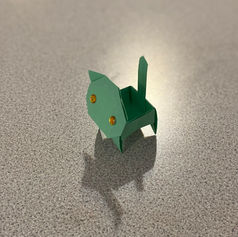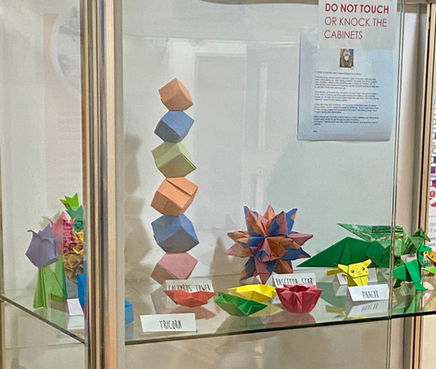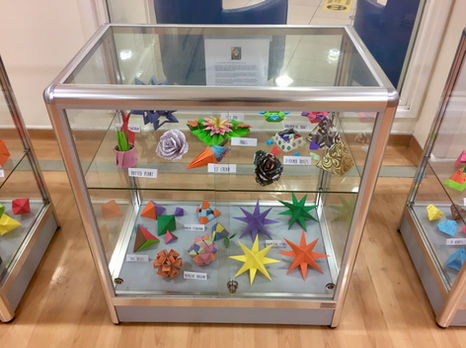
I really first got into origami during lockdown in early 2020,
at a time when many of us became, effectively, trapped within our own homes.
All the art projects had been either indefinitely postponed, or properly cancelled.
However, for some people, lockdown became the catalyst to discover new things, or to rediscover the things they'd long left behind, which was most definitely the case for me.
The previous Christmas, my wife had bought me a few origami books, so, instead of letting them gather dust on a shelf, it seemed like the much better option to actually read through them, & give it a go.
By happy coincidence, around the same time, I also received an email notifying me that year's '100DayProject' would be soon starting, & it seemed apt to use the project as both an incentive to participate, & the means to document what I was making.
My original intention was to make a new origami each day, for the duration of the 100 days,
and post the results online. The reality was that, by the end of the project, I'd made nearer 300.
Here are some of the origami that I made during the 100DayProject ...

... and some of the origami I have made since.
Origami is a very portable craft, so I like to make things while I'm out & about,
then leave what I make for other people to find, & hopefully enjoy.
More examples can be found on the 'Workshops' page.

"The '100DayProject' is a creativity excavation.
It's about unearthing dormant or unrealised creativity by committing to a daily practice, every day for 100 days."
- 100DayProject website.
For a time, my origami were on display at the University Hospital Coventry & Warwickshire.
A number of people contacted me, saying how much they enjoyed seeing what I had made, which was truly lovely to know, & most appreciated.
Here are a few photos of me setting up, & how the displays finally looked.
I am especially proud of the book case, and its tiny books.

A couple of examples of origami that moves (in the action sense, not the emotional sense).
The UFO spinner is balanced on a very small point, so has low friction, & requires very little encouragement to spin round. The Cat-in-a-Box uses a simple folded paper spring which provides the energy that enables the cat to jump up.
It's a similar mechanism that can be found in the hopping frog, & the jumping cats & bunnies.


























































